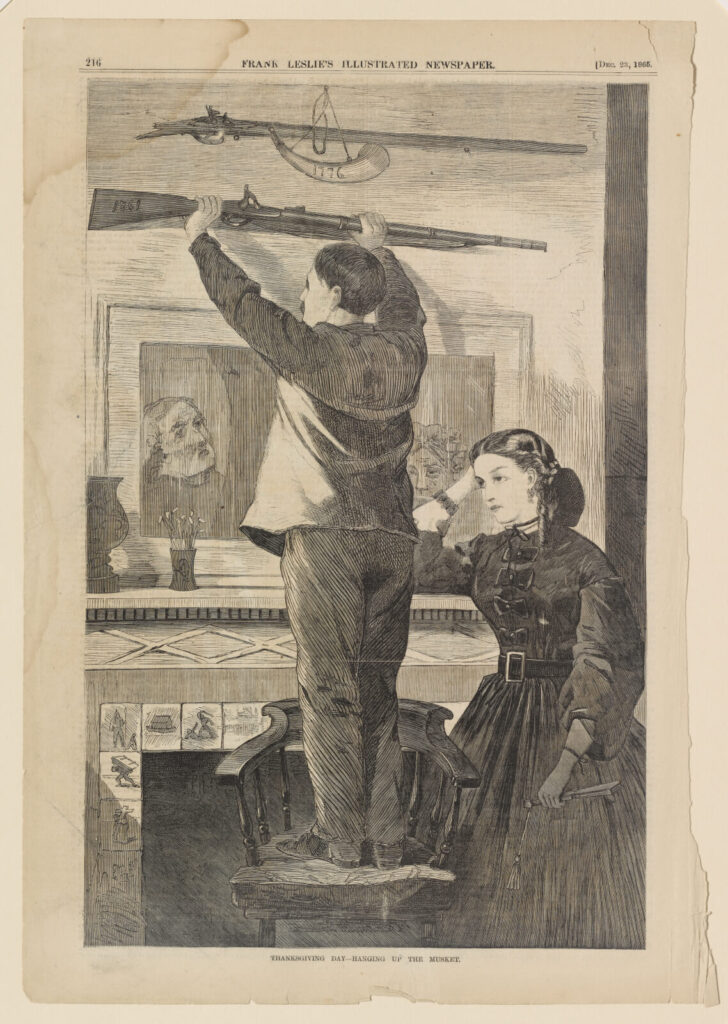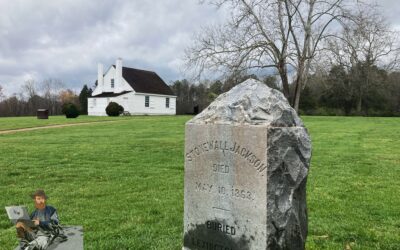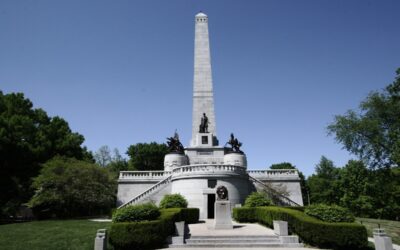The following woodcut by Winslow Homer depicts the inaugural celebration of Thanksgiving as an official national holiday in the aftermath of the Civil War. In 1863, President Abraham Lincoln proclaimed Thanksgiving as a nationally recognized holiday, marking this historic moment near the war’s conclusion. This decision transformed a long-standing regional custom into a formal and distinctly American observance, aimed at forging a fresh sense of national unity and identity.
After the prolonged Civil War had concluded, veterans had the opportunity to display their firearms as mementos of their battlefield experiences. Following a period of debate and deliberation, President Johnson authorized a bill in the spring of 1865 that permitted soldiers to retain their weapons, acknowledging that the ownership of these guns held significant pride and sentimental value. In the image you can see the broken firearm from 1776, representing the unfulfilled aspirations of the Revolutionary War, was juxtaposed with the newly acquired weapon from the most recent conflict. This image accompanied an article which proclaimed, “Now, with peace gracing our entire nation, its prospects for enduring tranquility in the years ahead are bright.”




0 Comments